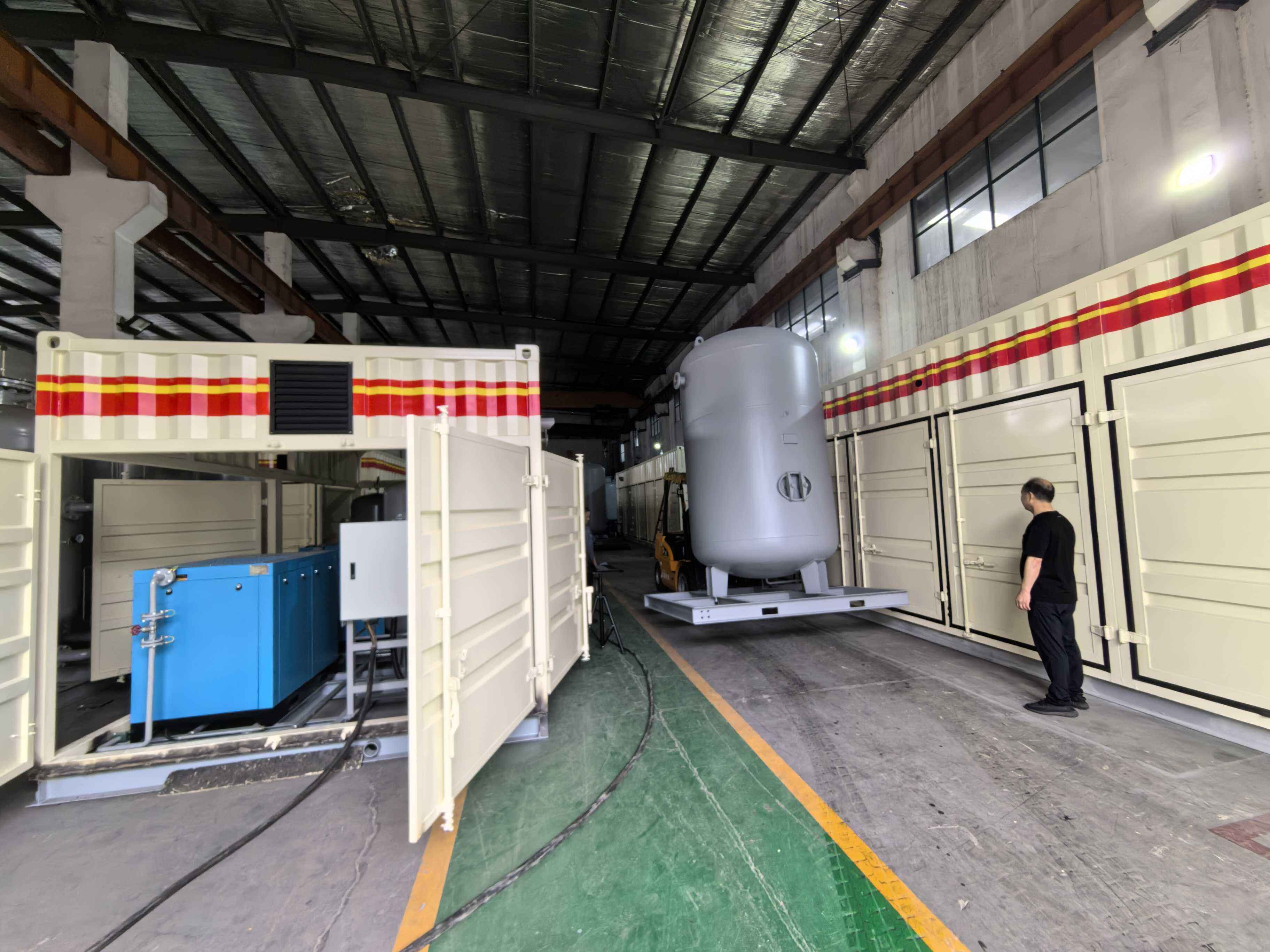Understanding the Critical Role of Air Factors in Industrial Gas Generation
In the world of industrial gas generation, efficiency isn't just about power consumption or output capacity – it's about the intricate balance of multiple factors that determine true operational effectiveness. At the heart of this complex equation lies a crucial yet often overlooked metric: the air factor. This fundamental parameter influences everything from operational costs to system longevity, making it essential for facility managers and engineers to understand its impact on nitrogen generator efficiency.
The air factor represents the ratio between the amount of compressed air input and the nitrogen output of a generation system. While many focus on the purity levels or flow rates, this vital metric often remains in the shadows, despite its significant impact on operational performance and cost-effectiveness. Understanding and optimizing your system's air factor can lead to substantial improvements in both efficiency and operational expenses.
The Science Behind Air Factors in Nitrogen Generation
Molecular Separation Process
The foundation of nitrogen generator efficiency lies in the molecular separation process. When compressed air enters the system, it contains approximately 78% nitrogen, 21% oxygen, and 1% other gases. The separation technology, whether Pressure Swing Adsorption (PSA) or membrane-based, must effectively isolate the nitrogen molecules from this mixture. The air factor directly correlates with how efficiently this separation occurs.
Advanced separation technologies employ specialized carbon molecular sieves or membrane fibers that selectively allow nitrogen molecules to pass while retaining oxygen and other gases. The efficiency of this process depends heavily on the quality of input air and the precision of the separation mechanism. A well-optimized system maintains an ideal air factor that ensures maximum nitrogen recovery without unnecessary energy expenditure.
Pressure and Temperature Dynamics
Pressure and temperature play crucial roles in determining nitrogen generator efficiency through their influence on the air factor. Higher operating pressures typically improve separation efficiency but require more energy input. Temperature fluctuations can affect membrane permeability and adsorbent performance in PSA systems. Understanding these relationships helps operators maintain optimal conditions for efficient nitrogen generation.
Modern nitrogen generators incorporate sophisticated control systems that continuously monitor and adjust these parameters to maintain ideal operating conditions. This dynamic management of pressure and temperature helps maintain consistent air factors and ensures reliable nitrogen production while optimizing energy consumption.
Impact of Air Factor on Operational Costs
Energy Consumption Analysis
The air factor directly influences the amount of compressed air required to produce nitrogen, which in turn affects energy consumption. A system operating with a poor air factor may require significantly more compressed air – and thus more energy – to produce the same amount of nitrogen. This inefficiency can lead to substantially higher operational costs over time.
Consider a typical industrial nitrogen generator running continuously: even a small improvement in the air factor can result in significant annual energy savings. For example, optimizing the air factor from 2.5 to 2.0 could reduce energy consumption by up to 20%, translating to substantial cost savings in large-scale operations.
Maintenance and Longevity Considerations
Beyond direct energy costs, the air factor influences system maintenance requirements and overall equipment lifespan. Systems operating with excessive air factors experience increased wear on components, leading to more frequent maintenance intervals and potentially shortened equipment life. Understanding and maintaining optimal air factors helps protect your investment and reduce long-term maintenance costs.
Regular monitoring and adjustment of the air factor can help identify potential issues before they become serious problems. This proactive approach to maintenance can significantly extend the operational life of nitrogen generation equipment while maintaining peak efficiency levels.
Optimizing Air Factor Performance
Measurement and Monitoring Techniques
Accurate measurement of the air factor requires proper instrumentation and monitoring protocols. Modern nitrogen generators come equipped with advanced sensors and monitoring systems that provide real-time data on air consumption, nitrogen output, and system efficiency. Regular calibration and maintenance of these monitoring systems ensure accurate readings and reliable performance data.
Implementing a comprehensive monitoring strategy allows operators to track trends in air factor performance over time. This data-driven approach enables early detection of efficiency degradation and helps identify opportunities for system optimization. Advanced analytics can provide valuable insights into operational patterns and suggest improvements for better efficiency.
Adjustment and Control Strategies
Optimizing the air factor involves careful adjustment of various system parameters. This includes fine-tuning operating pressures, managing flow rates, and ensuring proper maintenance of filtration systems. Modern control systems allow for automated adjustment of these parameters to maintain optimal efficiency under varying conditions.
Training operators in proper control strategies and providing them with clear guidelines for system optimization helps maintain consistent performance. Regular review and updating of control protocols ensure that the system continues to operate at peak efficiency as conditions change over time.
Future Trends in Nitrogen Generator Technology
Advanced Control Systems
The future of nitrogen generator efficiency lies in increasingly sophisticated control systems. Artificial intelligence and machine learning algorithms are being developed to automatically optimize air factors based on historical performance data and changing operational conditions. These smart systems can predict maintenance needs and adjust parameters proactively to maintain peak efficiency.
Integration with Industrial Internet of Things (IIoT) platforms enables remote monitoring and control of nitrogen generation systems. This connectivity allows for real-time optimization and expert support, ensuring that systems maintain optimal air factors regardless of location or operator expertise.
Innovation in Separation Technology
Ongoing research in separation technologies promises to deliver improvements in nitrogen generator efficiency. New membrane materials and improved molecular sieve formulations offer the potential for better separation efficiency and reduced air factor requirements. These advances could lead to significant reductions in operating costs and improved system performance.
The development of hybrid systems combining different separation technologies may offer new opportunities for optimization. These innovative approaches could provide more flexible and efficient nitrogen generation solutions for various industrial applications.
Frequently Asked Questions
How does air factor affect nitrogen purity levels?
The air factor has a direct relationship with nitrogen purity levels. A higher air factor typically allows for higher purity levels but at the cost of increased energy consumption. Finding the optimal balance between purity requirements and energy efficiency is crucial for cost-effective operation.
What is considered an optimal air factor range?
The optimal air factor range typically falls between 2.0 and 3.0 for most industrial applications, though this can vary depending on the specific technology and purity requirements. Regular monitoring and adjustment help maintain operation within this optimal range.
How often should air factor measurements be taken?
Air factor measurements should be monitored continuously through automated systems, with manual verification at least weekly. Regular data logging and analysis help identify trends and potential issues before they impact system performance.
Can improving the air factor extend equipment life?
Yes, maintaining an optimal air factor can significantly extend equipment life by reducing stress on system components. Proper air factor management results in more stable operation and less wear on critical components, leading to longer service intervals and reduced maintenance costs.

